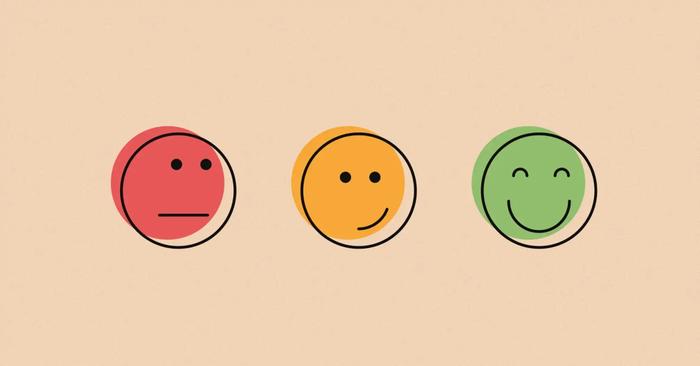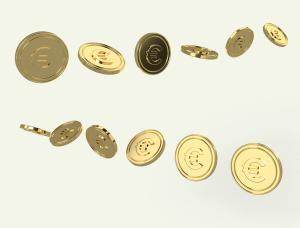Many sales and marketing teams are split into two distinct groups. For example, Heads of Sales will often want a business development team to focus on outbound sales, so they’ll typically task business development representatives (BDRs) with qualifying leads and making initial contact with prospective clients. On the other hand, sales development representatives (SDRs) tend to work with inbound sales opportunities. They might follow up on email contacts, website visits, or, depending on the organization, even deal with face-to-face showroom sales.
Sales-focused SDRs and sales managers usually enjoy this split in responsibilities because it means that sales reps can play to their strengths. BDRs tend to be great researchers, hunting down new leads and areas for potential new customers that others might not have thought of. Conversely, SDRs are often highly personable, able to strike up relationships quickly and have in-depth product knowledge they can utilize to direct would-be customers toward a purchase.
This split approach is not the only option though. Anyone responsible for structuring a sales team — even a small one consisting of just a few people— should also consider the merits of a full cycle sales set-up.
Okay, full sales cycles might not be the right fit for every business - but you should know what full sales cycle entails so you can make that decision for yourself.
Read this blog post to find out more about full sales cycles, the sort of businesses suited to them, and the potential advantages they can provide.
What is full cycle sales?
Full cycle sales is a method for providing B2B and B2C sales that puts individual sales reps in control of the whole sales process.

Although models can differ, in a typical sales cycle, there are seven stages to consider:
- Prospecting
- Making initial contact
- Qualifying
- Nurturing
- Product or service presentation
- Overcoming objections
- Closing the sale
Crucially, sales operations don't end at stage seven but return to stage one, continuing over and over again. In a full-cycle sales model, a single sales rep will be responsible for all seven stages, dealing with initial prospects through to closing the deal.
By contrast, businesses that have SDR and BDR teams will usually split their sales cycle up somewhere around stages three, four, or five. Exactly where it's split comes down to the sales manager and their judgment of what works best in their set-up. Sometimes, BDRs hand over their prospects to account executives (AEs) rather than SDRs, but the function is the same. The split approach means different salespeople take on different responsibilities. In a full cycle sales set-up, such split responsibilities don't exist.
What types of businesses utilize a full cycle sales model?
All types of businesses can benefit from full-cycle sales. However, some types of operations tend to lend themselves more naturally to this style of selling. Usually, because of resourcing, SMBs and startups usually adopt full-cyle selling. This is because small businesses simply don’t have the staff to split their sales and marketing operations into two distinct teams, so splitting their sales reps into two further groups just isn't practical.
In businesses with six or fewer sales reps, it's best to deploy full cycle sales so that everyone takes responsibility for each part of their own sales processes, from prospecting to closure. Another type of business that benefits from a full-cycle sales operation is one that's split across the world.
If you’ve got just one or two sales reps in a state, country, or city, then your executives probably cover all the sales processes in their respective regions.
Handing over leads midway through the sales process to another employee, potentially hundreds — if not thousands — of miles away, is impractical.
Businesses that have issues with a split sales model may find success in adopting a full-cycle sales process. This happens when BDRs and sales executives, who are primarily focused on prospecting, aren't handing leads over at the right time. This may cause resentment in SDR and AE teams, especially when disputes over bonuses and commissions ensue.
Similar problems can arise when BDRs hand over their leads, but too many of them are not closed by the teams they've passed them on to.
If so, BDRs can sometimes feel like closing deals themselves. In turn, this causes problems for sales managers with disgruntled sales executives in their teams. Any Head of Sales who faces these sorts of issues may find that switching to a full-cycle sales model removes these issues, resulting in a happier, motivated, and more productive sales team.
The benefits of full cycle sales
Some sales managers like full-cycle sales because it simplifies processes. Others prefer it because it aligns with their operational needs, either because they're split across geographies or because of the size of the team they manage.
Conversely, some business leaders impose full sales cycles on their senior sales executives because it creates a level playing field for all their staff, helping determine who their top performers are.
There are numerous advantages of using full sales cycles. Even though switching from a split model doesn't suit every sales team, the potential upsides should be considered and weighed against any potential disruption that might occur from changing. Here are the advantages of full-cycle sales:
1. Maintain a customer-centric approach
Employing customer-centric or customer-first strategies can be useful, helping your sales team generate better-qualified leads from more engaged customers.

However, selling to pre-existing customers does come with some downsides. Sales generally happen when the customer is ready to purchase (not the person selling). This can be frustrating for salespeople to accept and being too pushy could damage your relationship with your existing customer.
Instead, it’s better to focus on what your customer wants, what they need and make it easy as possible for them to convert. Use your salesperson as a single point of contact for future sales, enquiries and order follow-ups.
2. Avoid disqualifying too many leads
When you have poorly trained SDRs, with little to no understanding of your value proposition and overall sales process, who qualify leads, you may experience poor results.
If a sales rep has the job of qualifying leads, then they're bound to disqualify some, but this might be for good reason. For instance, the prospect isn’t suitable or isn’t ready to make a sales decision.
When sales executives are responsible for both prospecting and lead qualifying, they're only likely to abandon leads if it's truly going nowhere.
When a sales rep is only qualifying leads and hasn't been involved in earlier stages, it often becomes easier to disqualify. You could be losing sales that, had the lead not been disqualified, would've led to closures.
A split team sales model doesn't necessarily mean you're throwing good leads away, but the potential is always there. It just isn’t as likely in a full-cycle sales model.
3. Give your customers what they're asking for
If you have a split sales cycle with BDRs and account executives or SDRs, of course, it can work well. Some clients may want to continue utilizing relationships with their account manager, especially if they're happy with the service they’re receiving.
However, some customers may prefer to deal with one point of contact throughout each new sales process. T his can often be the case among clients who have returned to you after not placing orders for a while or customers who need a bespoke service for every order they place.
If this is what all — or even just some — of your customers are saying, changing to full-cycle sales makes sense.
This can be particularly effective in B2B sales where client entertainment, product education, or technical sales.
4. Give your sales reps what they want
In some sales teams, it’ll be your executives, not your customers, who tell you they'd prefer to work in a full cycle sales environment.

For sales executives, it means enjoying a more varied role, taking charge of all the stages in the cycle, not just one or two. Also, full-cycle sales can lead to more turnover through fewer disqualifications, thereby boosting the earning potential of sales reps.
Full-cycle sales models also help make the ownership of sales clearer cut. By having one person prospect, nurture, qualify, and close their sales, there's less room for others to claim commissions or ownership of sales in which they've only had a minor role. As a result, this can lead to a happier workplace.
Challenges of implementing full-cycle sales
Switching to a full-cycle sales model can bring many benefits, but it’s not without challenges. Sales managers must anticipate potential hurdles and prepare strategies to address them. Here are the common obstacles businesses face during this transition:
Skill gaps among sales reps
Sales reps in split sales models often specialize in specific stages of the sales process, such as prospecting or closing deals. Transitioning to a full-cycle sales process requires a broader skill set, including advanced lead generation or relationship management strategies. Some reps may struggle to adapt to these new demands without adequate training.
Solution:
Invest in comprehensive training programs to upskill your team. Focus on communication, negotiation, and time management to prepare reps for their expanded roles.
Resistance to change
Sales teams accustomed to a specialized cycle sales process may resist the shift to a full sales cycle. Concerns about increased workload, lack of expertise in certain stages, or fears of failure can lead to pushback.
Solution:
Communicate the benefits of the full cycle sales model clearly, both for the organization and individual reps. Highlight how it can enhance their earning potential, job satisfaction, and autonomy. And then encourage open dialogue to address concerns and involve your team in the transition planning.
Increased workload
Assuming responsibility for the entire sales process can be overwhelming, particularly for reps used to focusing on one or two tasks at a time. If not managed carefully, the added responsibility may cause burnout.
Solution:
Set realistic goals and ensure workloads remain balanced. Use tools like CRM systems to automate repetitive tasks, freeing up time for reps to concentrate on high-value activities such as follow up with potential customers.
Managing performance metrics
Evaluating sales performance in a full-cycle sales process can be more complex. With reps handling every stage of the sales process, identifying bottlenecks or areas for improvement requires more nuanced analysis.
Solution:
Leverage advanced CRM analytics to track each stage of the sales process. Define clear KPIs, such as conversion rates, deal velocity, and customer satisfaction, to maintain accountability and visibility.
How CRM works for full cycle sales
Customer relationship management (CRM) systems make it easier for sales reps and sales staff to track the status of their deals, from the start of the sales cycle to closing and generating new referrals from existing clients.
A key benefit of utilizing a CRM system in a full cycle sales set-up is that you’ll centralize your prospect and customer data in one location.
Well-designed contact management software allows managers to easily understand who's dealing with which clients and, crucially, which sales rep is in charge of which contact. In a full cycle sales model, you'll want all inbound calls and emails from a contact to go to the assigned rep. Equally, an integrated contact management system that filters email correspondence and inbound phone calls correctly will help streamline internal processes. Not only does it save time among your employees, but it should also improve the customer's experience by finding their point of contact seamlessly.
Your CRM suite should also provide you with sales analytics. This is particularly useful for manufacturing companies or businesses that need to buy goods to fulfill orders.
By tracking your sales reps' performance and where they are in the sales cycle, you can better predict how to manage your financial and human resources down the line.
Likewise, if too many sales reps are at the prospecting and nurturing stages, your CRM should inform you, allowing you to make informed managerial decisions to move more sales further into the cycle at later stages.
Capsule CRM can improve the performance of a full-cycle sales operation significantly. Discover how by signing up for our 14-day free trial.
FAQ
What is a full cycle sales rep, and how do they differ from sales development reps?
A full cycle sales rep is responsible for managing the entire sales process, from lead generation and prospecting through to closing deals and maintaining customer relationships. Unlike sales development reps (SDRs) who typically focus on the initial stages of the sales process, such as generating leads and qualifying potential customers, full cycle sales reps oversee all stages of the sales cycle. This includes identifying potential clients, conducting sales conversations, addressing pain points, and ultimately closing the sale.
How do full cycle sales reps contribute to the success of sales teams?
Full cycle sales reps contribute significantly to the success of sales teams by taking ownership of the entire sales process. Their ability to manage multiple stages of the sales cycle allows for a more cohesive and customer-centric approach, ensuring that potential clients receive consistent and personalized interactions. This comprehensive involvement often leads to higher conversion rates, increased customer satisfaction, and stronger customer relationships.
What skills are essential for a full cycle sales rep to effectively close deals?
Essential skills for a full cycle sales rep include strong communication and negotiation abilities, the capacity to understand and address customer pain points, proficiency in lead generation and prospecting, and the ability to conduct insightful sales conversations. Additionally, successful full cycle sales reps possess a deep understanding of their product or service, are adept at managing customer interactions, and can maintain a customer-centric approach throughout the sales cycle.
How do account executives fit into the sales development process alongside full cycle sales reps?
Account executives (AEs) typically focus on converting qualified leads into customers, working closely with sales development reps who identify and qualify these leads. In organizations where full cycle sales reps are present, the roles may overlap, with full cycle sales reps handling both the lead generation and closing phases. The collaboration between AEs and full cycle sales reps ensures a seamless transition for potential customers through the sales funnel, leveraging each role's strengths to maximize sales efficiency and effectiveness.
Can full cycle sales reps generate their own leads, and how does this impact the sales process?
Yes, full cycle sales reps can and often do generate their own leads in addition to managing the rest of the sales process. This ability to self-source leads allows for greater control over the quality and relevance of potential clients entering the sales funnel. Generating their own leads can lead to more meaningful and targeted sales conversations, as reps are already familiar with the prospect's background and needs, potentially accelerating the sales cycle and improving the chances of closing deals.
What strategies can full cycle sales reps use to identify and address potential clients' pain points?
Full cycle sales reps can use several strategies to identify and address potential clients' pain points, including conducting thorough research on the client and their industry, asking insightful questions during sales conversations, and actively listening to client feedback. By understanding the specific challenges that clients face, reps can tailor their sales pitch to highlight how their product or service offers a solution, thereby aligning with the client's needs and increasing the likelihood of a successful sale.
How do marketing teams support full cycle sales reps in generating leads and closing deals?
Marketing teams support full cycle sales reps by creating targeted marketing campaigns that attract potential customers and generate leads. Through a combination of content marketing, email campaigns, social media outreach, and other marketing initiatives, marketing teams can help build awareness and interest in the product or service, providing full cycle sales reps with a steady stream of leads to pursue. Additionally, marketing can supply sales reps with valuable content and insights that can be used during sales conversations to address customer pain points and demonstrate value.
What role does customer interaction play in the success of full cycle sales reps?
Customer interaction plays a crucial role in the success of full cycle sales reps, as it is through these interactions that reps build relationships, understand customer needs, and ultimately close deals. Effective customer interactions involve active listening, empathy, and a genuine interest in solving the customer's problems. By focusing on creating positive and meaningful engagements at every touchpoint, full cycle sales reps can enhance customer trust and loyalty, leading to more successful sales outcomes and long-term customer relationships.




